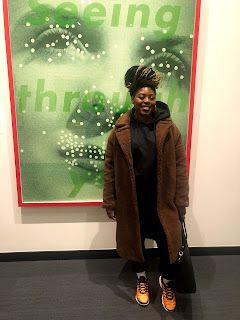What is Identity
To construct one's identity means to be conscious of who you are in public and who you are at home. Constructing an identity means to be conscious of what you decide to say around people and what you decide not to say. Constructing an identity is how you choose to wear your hair, the way you choose to dress, and last but not the least who you choose to spend your daily activities with. In “The Art of Self Invention” Finkelstein mentions that appearances are both revealing and deceiving (Finkelstein 3).” This quote goes to tell you that at the end of the day you may not really know who a person really is and certainly will not be able to tell just by appearances. People’s appearances and identities seem to change and intertwine with society these days. There is always a new trend out there that we thank popular culture and people tend to feel the urge to conform. This pattern of appearances changing due to what is trendy has been around for decades as Finkelstein states “The growth of the entertainment industries during the twentieth century brought a new emphasis to appearance.
The spectacle is “an affirmation of appearances” meaning it is what you want it to be. The spectacle is derived from the world’s loss of unity. Everyone wants to follow society not knowing it is leading them into isolation. This plays a role in identity because people look into other people to find who they are not knowing this not the answer and it is benefitting anyone.
 |
"Matar Mbaye" |
The first painting I found interesting was by Kehinde Wiley, titled “Matar Mbaye (Study 1)”, 2007. Wiley traveled to West Africa in 2007, in search of his own ancestral roots. Wiley wanted to explore the other half of his identity. Wiley’s father whom he never knew was born in Nigeria and gave Wiley a name originated from West Africa meaning the second born of a set of twins. While Wiley was in West Africa, he came across Matar Mbaye. Matar Mbaye is a young boy from Dakar, Senegal who Wiley encountered, and he engaged as a model as part of Wiley’s street casting process. Wiley then created a self-portrait with Matar Mbaye in the center, with skin color appearing to be a blackish grey color, while the background was bright and vibrant. The painting contained vines which can be a symbolism of roots and there is also a bird that resembles a phoenix, this is a symbolism of being reborn again. This painting has identity written all over it as well as using the black body to counter the absence of that body in museum spaces throughout the world.
 |
|
The second painting that caught my eye was by Fahamu Pecou, titled “Rock. Well: Radiant, Pop, Champ” 2010. This was an acrylic on canvas self-portrait that features the artist looking in a mirror painting himself in a bedroom. On the bedroom wall, you can see Jean-Michel Basquiat, Andy Warhol, and Muhammad Ali. These are all well known public figures who Pecou says are his three personal heroes that heavily influenced him. This photo touches on identity from the way the chooses to dress and wear his hair. It touches on race because there was a time where African Americans were underrepresented in museums.
 |
"Smokey" |
“Smokey,” 2001by Dawoud Bey caught my attention next. This portrait is of an African American male who appears very stylish. The goal of this portrait was to explore “how young people see themselves through the lens of race, gender, class, and culture.” In a generation where “social clichés” and “stereotypes” tend to heavily influence the population, Dawoud wanted to steer away from that. Finkelstein mentions that “the growth of the entertainment industries during the twentieth century brought a new emphasis to appearance (Finkelstein 3).” This goes to show you that the time period had a lot to do with style and fashion. When people dress a certain way, we now describe it as a decade. For example, the portrait is inspired by the 70s and this is evident in the color and style of the shirt the African American man is wearing.
 |
"Seeing Through You" |
Untitled (Seeing through you), 2004-05 by Barbara Kruger is the fourth portrait that I found interesting. This portrait comes off simple but holds a lot of volumes. In this portrait, there is a face shot of a lady with a neutral face in black and white and there is a big text saying. “Seeing through you” which can mean many things. Kruger’s work questions the viewer about feminism, classicism, consumerism, desire, and individual autonomy, contrasting with the black and white images she pulls from mainstream magazines that monetize these ideas. She also goes on to say that the act of seeing is one imbued with power. Her goal was to intercept the stereotype, code, or convention by which power is imposed.
 |
"Lenny" |
Lastly
a portrait that stood out from the rest was by Alec Soth titled Lenny, 2002. This
artist steps out of the norm and draws inspiration from Diane Arbus, who
photographs marginalized people such as circus performers, nudists, and members
of the transgender community. In this portrait to the right you can see a huge
guy who goes by the name of Lenny and he is a construction worker. The whole
idea of this portrait is to capture Lenny in his prime since his son lost his
life at a young age

No comments:
Post a Comment